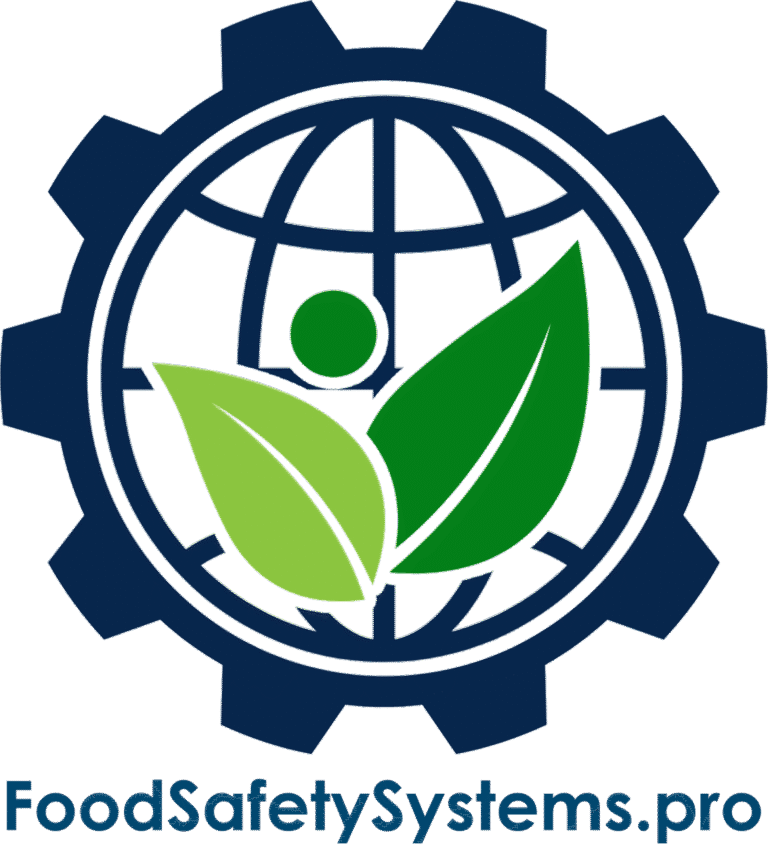COA & Certification Verification
Aligned with SQF Code Edition 9 – System Element 2.4.3
Requirement Overview
According to SQF Code Edition 9, System Element 2.4.3 requires:
“Certificates of Analysis (COAs) and food safety certifications (e.g., GFSI-recognized schemes) shall be obtained and verified for compliance with specified requirements.”
This requirement ensures that raw materials and ingredients entering your facility meet both internal specifications and external regulatory benchmarks.
Disclaimer: Food Safety Systems is not affiliated with or endorsed by the Safe Quality Food Institute (SQFI). This content is intended solely for educational and implementation purposes. Visit www.sqfi.com for official program guidance.

Key Compliance Objectives
-
✓ Ensure 100% collection and validation of COAs for applicable materials
✓ Verify authenticity and scope of supplier food safety certifications
✓ Document a formal verification procedure
✓ Establish an escalation process for discrepancies
Step-by-Step Implementation Guide
1. Establish a COA and Certification Verification System
-
Include:
-
• A COA Requirements Matrix by material type
• Certification acceptance criteria (e.g., GFSI-recognized schemes, USDA Organic, etc.)
• Clear verification responsibilities (e.g., receiving, QA, purchasing)
Evidence to Maintain:
-
• Documented verification SOP
• Approved materials/specifications matrix
• List of accepted certifications and verification methods
- • A COA Requirements Matrix by material type • Certification acceptance criteria (e.g., GFSI-recognized schemes, USDA Organic, etc.) • Clear verification responsibilities (e.g., receiving, QA, purchasing)
- • Documented verification SOP • Approved materials/specifications matrix • List of accepted certifications and verification methods
2. Implement Verification Activities
| Document Type | Verification Method | Frequency |
|---|---|---|
| COA (Certificate of Analysis) | Check test parameters against spec sheet | Per shipment |
| GFSI/third-party certifications | Validate on issuing body’s database + scope review | Annually |
| Organic/NON-GMO | Confirm cert and perform mass balance audit | Per lot or batch |
-
Evidence to Maintain:
-
• Verified COAs with approval notations
• Certification review logs and renewal tracking
• Material validation reports
- • Verified COAs with approval notations • Certification review logs and renewal tracking • Material validation reports
3. Manage Non-Conforming COAs or Certificates
-
Escalation Steps:
-
1. Quarantine affected products
2. Analyze variance severity (critical vs. minor)
3. Notify supplier within 24 hours
4. Request and document corrective actions
5. Reapprove material post-verification
Evidence to Maintain:
-
• COA discrepancy logs
• Corrective Action Reports
• Supplier communication records
• Verification of resolution before release
- 1. Quarantine affected products 2. Analyze variance severity (critical vs. minor) 3. Notify supplier within 24 hours 4. Request and document corrective actions 5. Reapprove material post-verification
- • COA discrepancy logs • Corrective Action Reports • Supplier communication records • Verification of resolution before release
4. Continuously Monitor and Review
-
Ongoing Monitoring Should Include:
-
• Monthly audits of COA completeness and accuracy
• Quarterly reviews of expiring certifications
• Annual assessment of the verification process’s effectiveness
Evidence to Maintain:
-
• Internal audit reports
• Expiry tracking documents
• Verification process updates and revisions
- • Monthly audits of COA completeness and accuracy • Quarterly reviews of expiring certifications • Annual assessment of the verification process’s effectiveness
- • Internal audit reports • Expiry tracking documents • Verification process updates and revisions
5. Document and Review the Test
-
Documentation Requirements:
-
• Full test report including all steps and findings
• Corrective/preventive actions
• Update recall SOPs based on lessons learned
Evidence to Maintain:
-
• Signed mock recall report with conclusions
• Updated recall SOP and training records
• Corrective action plan with completion tracking
- • Full test report including all steps and findings • Corrective/preventive actions • Update recall SOPs based on lessons learned
- • Signed mock recall report with conclusions • Updated recall SOP and training records • Corrective action plan with completion tracking
Common Audit Findings & Recommended Fixes
Audit Finding
Recommended Fix
Missing or incomplete COAs
Implement a mandatory receipt check at receiving
Expired or invalid certificates
Track expiry dates with alerts
No validation of test parameters
Require QA review for COA compliance
Delayed discrepancy response
Use a documented escalation timeline
| Audit Finding | Recommended Fix |
|---|---|
| Missing or incomplete COAs | Implement a mandatory receipt check at receiving |
| Expired or invalid certificates | Track expiry dates with alerts |
| No validation of test parameters | Require QA review for COA compliance |
| Delayed discrepancy response | Use a documented escalation timeline |
Auditor’s Checklist for SQF System Element 2.4.3
Auditors typically review:
-
• COA verification logs for incoming materials
• GFSI or equivalent certification validation records
• Escalation reports for any identified discrepancies
• Interviews with receiving and QA personnel regarding document review process
Implementation Roadmap
Build the Verification System
-
✓ Draft your COA and certification verification SOP
✓ Set up a COA parameter checklist by product type
Train & Assign Responsibilities
-
✓ Designate responsible parties for verification at each stage
✓ Train receiving, QA, and purchasing teams on how to verify properly
Monitor & Document
-
✓ Check each COA for specification compliance
✓ Log certificate renewals, validations, and discrepancies
Improve and Automate
-
✓ Use alerts for certificate expiration
✓ Conduct annual verification system reviews
Why This Matters?
A robust COA and certification verification process:
-
✓ Prevents use of out-of-spec or non-compliant materials
✓ Minimizes risk of recalls or enforcement action
✓ Supports internal quality assurance standards
✓ Improves supply chain accountability and readiness for audits
Need Help Creating or Optimizing Your COA Verification Program?
Food Safety Systems provides:
-
✓ COA review templates and spec matching sheets
✓ Certificate validation trackers and audit-ready forms
✓ Training modules for QA and receiving personnel
✓ Tools for automating expiration monitoring and discrepancy alerts
Privacy Policy | Terms of Service | Disclaimer
Powered by Consultare Inc. Group, A Compliance Company







